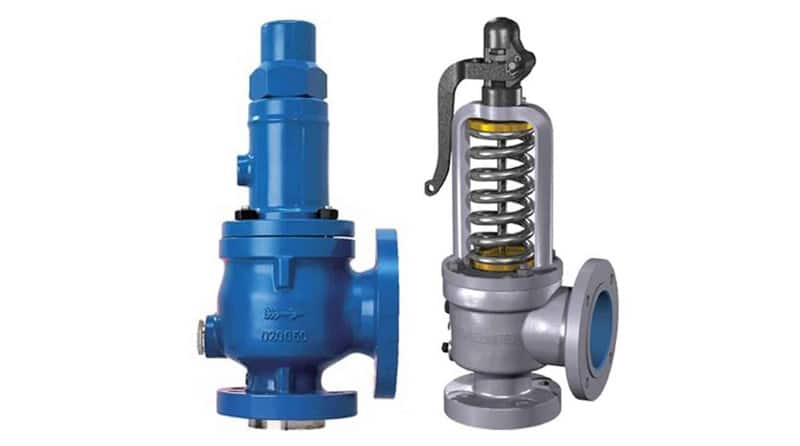Best Practices for Pressure Relief Valve Testing

For any facility that uses a pressure system or boiler, pressure relief valve testing is a must. While every facility has different testing requirements depending on industry and local code, the way you test pressure relief valves is much the same, regardless of how often you’re required to do it. If you’re gearing up for regular pressure relief valve testing, here are a few best practices to keep in mind as your testing schedule begins:
Always Ensure Technician’s Personal Protection
Pressure relief valve testing and inspection can include high noise levels and the discharge of high velocity and high-temperature fluids. Technicians should always take care to wear appropriate personal protective equipment, like eye and ear protection. When entering client facilities, it’s important that valve technicians also ask about and follow the facility’s unique PPE guidelines as well.
Perform Regular Testing
Pressure relief valve testing is most effective when completed on a regular schedule. Though every industry has a unique set of pressure relief valve testing requirements and guidelines, all facilities are best served with regular, comprehensive testing that includes both an operational test, and the verification of the valve’s nameplate set pressure.
Operate-in-Place Test
If a pressure relief valve has never been tested before or has no record of prior testing, the National Board states that it must first be tested by lifting the test lever. If the valve doesn’t open and is stuck, it’s important that the equipment be immediately removed from service, until the valve can be replaced or repaired.
Pressure relief valves are necessary for the safe operation of any facility. If a valve is stuck, the equipment is considered hazardous, and testing must be completed under controlled conditions.
Verify Nameplate Set Pressure
If the valve has been previously tested and has passed the operate-in-place test, it’s important to complete a test to verify nameplate set pressure. Every industry varies on the mandated frequency of these tests, but it is important to complete this type of pressure relief valve testing at least as regularly as your industry mandates, as it is the only way to verify that pressure relief valves are actuating at the appropriate setpoint.
Again, inline testing is a convenient and exceptionally accurate testing method here, as you do not have to halt operations to test valves inline. Bench testing is occasionally mandated, but because it requires full-facility downtime, it’s often best to opt for inline testing whenever possible.
Be Aware of the Pop-Off Pressure Point
An important best practice when testing pressure relief valves is to be aware of a valve’s pop-off pressure point. Pressure relief valve testing does work to verify the valve’s set point, but you never want to force the valve to pop open.
Instead, proper testing pushes the valve just to its simmer point, where the valve begins to lift, both so your technician gets an accurate read on the valve’s set point, and so no damage is done to the valve. Forcing the valve to pop-off with too much pressure can cause damage to the valve, and doesn’t always return an accurate setpoint, as the valve is overpressurized, rather than just tested to its specific simmer and setpoint.
Best practices for pressure relief valve testing indicate that technicians should test valves carefully, with a constant awareness of the valve’s pop-off pressure point, in order to avoid damage and to more accurately test the valve.
Understand When to Repair or Replace Pressure Relief Valves
A key component of pressure relief valve testing is understanding when the valve needs maintenance. This is part of the reason we always recommend inline testing, where technicians are required to complete the testing. A valve technician understands the key signs of pressure relief valve failure and can replace or repair faulty valves onsite when testing valve inline.
Not every valve will pass pressure relief valve testing. It’s important that you understand when the replacement or repair of pressure relief valves is necessary, so you can keep your facility running safely and efficiently.
Does your company follow these best practices for pressure relief valve testing? Make the process easier and more efficient with AccuTEST’s advanced inline pressure relief valve testing system. See our system in action with a live webinar demo, or learn more about how inline pressure relief valve testing can increase your profitability.



